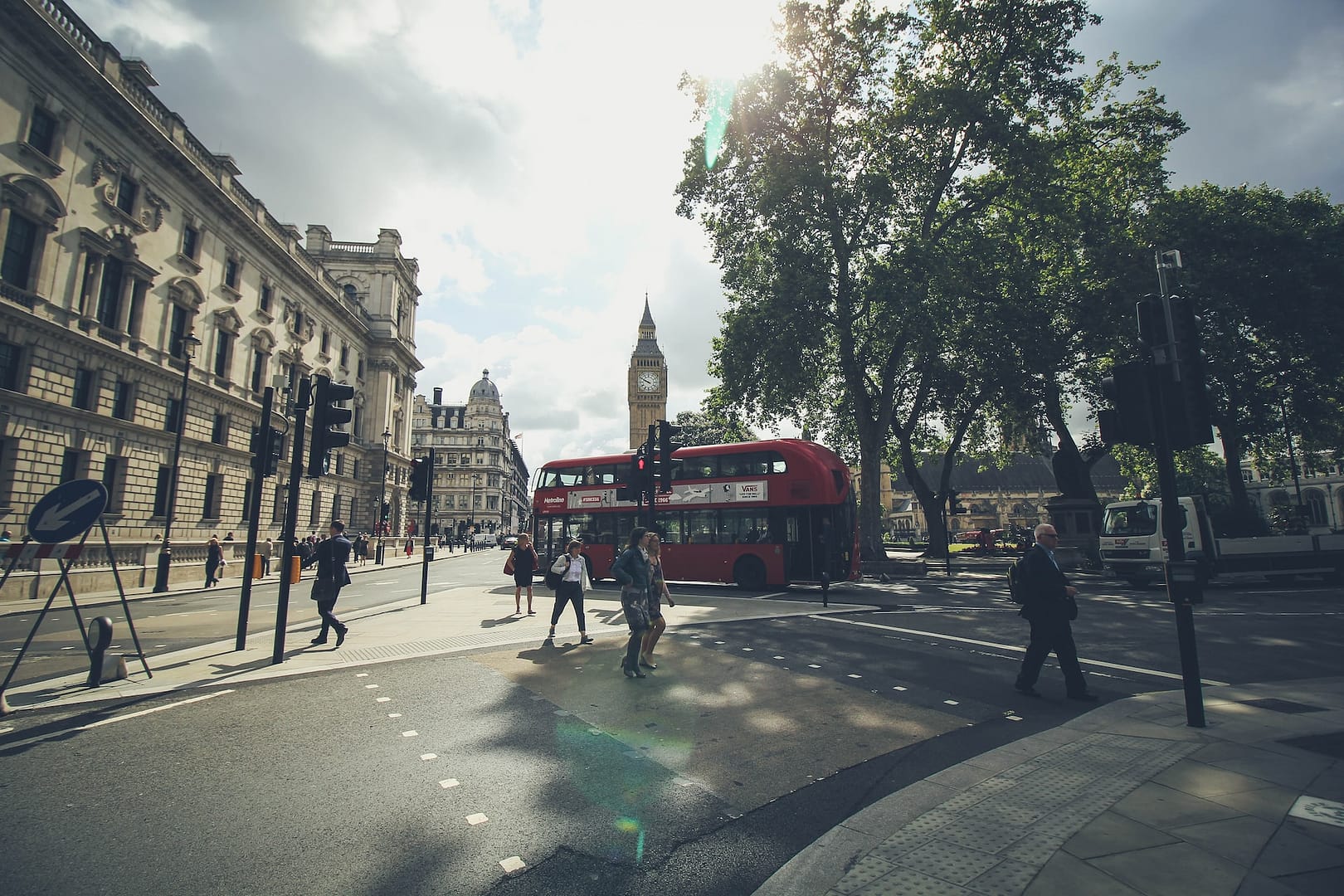In a world dominated by urban landscapes and bustling metropolises, the safety of vulnerable road users has become a paramount concern. Among these road users, pedestrians stand out as some of the most vulnerable individuals. The question that often arises is whether walkable cities, designed with pedestrian-friendly infrastructure in mind, truly offer a safer haven for these individuals. Let’s embark on a journey to explore this vital issue, examining the factors that make pedestrians vulnerable, the risks they face, and how walkable cities may hold the key to a safer future for them. We will also explore the options you have when making a road traffic accident claim with National Claims.
The Vulnerability of Pedestrians
Before delving into the safety of walkable cities, it’s crucial to understand why pedestrians are considered one of the most vulnerable groups on the road. Unlike motorists who are protected by the confines of their vehicles, pedestrians have little more than their own bodies to shield them from the dangers of traffic.
Imagine a bustling city street during rush hour. Pedestrians navigate through a sea of cars, trucks, and bicycles, relying solely on their senses to stay safe. This inherent vulnerability is accentuated by various factors, including the lack of protective barriers and the unpredictability of human behaviour.
The Lurking Danger: Where Are Pedestrians Most Likely to Be Hit?
To assess whether walkable cities offer a safer environment for pedestrians, we must first pinpoint the areas where pedestrians are most likely to be involved in accidents. Such knowledge can help identify areas for improvement and guide city planners in their efforts to create safer urban spaces.
Intersections: Intersections are high-risk zones for pedestrians. Here, vehicles from different directions converge, and pedestrians must cross multiple lanes of traffic. The risk is exacerbated when drivers fail to yield the right-of-way or pedestrians ignore traffic signals.
Crossings: Paradoxically, crossings, designed to enhance pedestrian safety, can sometimes be perilous. Inattentive drivers may not yield to pedestrians, leading to dangerous situations. However, crossings in walkable cities often incorporate features like pedestrian-activated signals, making them safer.
Unmarked Crossings: In less pedestrian-friendly areas, unmarked crossings present significant risks. Without clear signage or crossings, pedestrians are left to fend for themselves when crossing the street. Walkable cities tend to address this issue with marked crossings and traffic calming measures.
Paths: Insufficient or poorly maintained paths force pedestrians to share the road with vehicles. This increases the likelihood of accidents, especially in areas with heavy traffic.
The Essence of Walkable Cities
Now that we understand the vulnerability of pedestrians and the danger zones they face, let’s delve into the concept of walkable cities. What defines a walkable city, and how does it contribute to the safety of vulnerable road users?
Walkability Factors
Walkable cities prioritise pedestrian safety and convenience by incorporating several key factors:
Pedestrian-Friendly Infrastructure: These cities boast well-maintained paths, clearly marked crossings, and pedestrian-friendly traffic signals. Such features encourage walking and reduce the likelihood of accidents.
Traffic Calming Measures: Speed limits and road design in walkable cities are often tailored to reduce vehicle speeds. Slower traffic is less likely to cause severe injuries in the event of a collision with a pedestrian.
Mixed Land Uses: Walkable cities often feature mixed land uses, meaning that residential, commercial, and recreational areas coexist. This reduces the need for long commutes and encourages walking as a means of transportation.
Public Transportation Integration: Seamless integration of public transportation systems with walking routes makes it easier for pedestrians to combine walking with other forms of transit, reducing the need for private vehicles.
Benefits of Walkable Cities for Pedestrians
Walkable cities offer a plethora of benefits for pedestrians, which directly contribute to their safety:
Reduced Risk of Accidents: The well-designed infrastructure of walkable cities minimises the risk of accidents at intersections and crossings. This, in turn, reduces the chances of pedestrians being struck by vehicles.
Improved Air Quality: A reduced reliance on personal vehicles in walkable cities results in improved air quality. Pedestrians enjoy cleaner air as they navigate urban environments, contributing to better overall health.
Enhanced Physical Health: Walking is a form of exercise that promotes physical well-being. In walkable cities, where walking is often the preferred mode of transportation, residents tend to be healthier and more active.
Community Interaction: Walkable cities foster a sense of community by encouraging people to interact with their surroundings and each other. This social fabric can contribute to safer neighbourhoods, as residents are more likely to look out for one another.
Reduced Traffic Congestion: Walkable cities experience less traffic congestion, reducing the likelihood of accidents caused by impatient or aggressive drivers.
Realising the Vision: The UK’s Approach
To gain a deeper insight into the real-world implementation of walkable cities and their impact on pedestrian safety, let’s take a closer look at the United Kingdom’s approach. The UK has made significant strides in transforming its urban spaces into pedestrian-friendly environments.
The Pedestrian Pound
The UK recognises the economic benefits of walkable cities, and a concept known as the “Pedestrian Pound” has gained traction. This term refers to the notion that pedestrians contribute significantly to local economies. When people can easily walk to shops, restaurants, and other businesses, they are more likely to spend money in their communities.
In response to this concept, UK cities have been investing in pedestrian infrastructure to attract shoppers and promote local businesses. The result is a win-win situation where pedestrians enjoy safer environments, and businesses thrive due to increased foot traffic.
Vision Zero
The UK has also embraced the Vision Zero initiative, which aims to eliminate all road deaths and serious injuries by 2040. As part of this initiative, walkable cities have become a priority. Vision Zero includes measures such as lowering speed limits in urban areas, redesigning intersections, and implementing safer road layouts to protect vulnerable road users like pedestrians.
The UK’s commitment to Vision Zero underscores the importance of creating walkable cities that prioritise pedestrian safety. While the goal of zero road deaths and injuries may be ambitious, it sends a clear message that pedestrian safety is a top priority.
Making a Road Traffic Accident Claim with National Claims
At National Claims, we understand the importance of pedestrian safety in today’s urban landscapes. Our mission is to provide support and assistance to those who have been involved in road traffic accidents, including pedestrians. If you or a loved one has suffered injuries in a road traffic accident in a walkable city or any other location in the UK, here’s how you can make a road traffic accident claim with National Claims.
Contact Us
The first step in the claims process is to get in touch with our experienced team. You can reach us through our website, over the phone, or by visiting one of our local offices. Our friendly and knowledgeable staff will guide you through the initial steps and provide you with all the information you need to start your claim.
Consultation and Evaluation
Once you’ve contacted us, we’ll schedule a consultation to gather all the necessary details about your accident. Our team of claims specialists will carefully assess your case to determine its validity and potential for success. We’ll discuss the circumstances of the accident, the extent of your injuries, and any supporting evidence you may have.
Legal Representation
If we believe you have a valid claim, National Claims will assign a dedicated solicitor from our talented panel to your case. Your solicitor will work closely with you, providing expert legal advice and representation throughout the process. We understand that dealing with a road traffic accident can be challenging, and our team is here to support you every step of the way.
Gathering Evidence
To build a strong case, it’s essential to gather evidence related to the accident. This may include photographs of the accident scene, medical records, witness statements, and any other relevant documents. Your solicitor will assist you in obtaining this evidence and ensure it is properly documented and presented.

Conclusion
In conclusion, the safety of vulnerable road users, especially pedestrians, is a critical concern in today’s urban environments. Walkable cities, with their emphasis on pedestrian-friendly infrastructure and safety measures, offer promising solutions to reduce the risks pedestrians face on the road.
The United Kingdom, exemplified by London and its initiatives, has shown a commitment to creating walkable cities that prioritise pedestrian safety. Vision Zero and the Pedestrian Pound are driving forces behind this transformation, focusing on eliminating road deaths and injuries and enhancing local economies.
However, creating walkable cities is an ongoing process that requires collaboration among city leaders, urban planners, and residents. The evidence from the UK and other regions suggests that walkable cities can indeed be safer for vulnerable road users.
At National Claims, we recognise the importance of pedestrian safety and are dedicated to supporting those who have been injured in road traffic accidents. Our experienced team is here to guide you through the process of making a road traffic accident claim, ensuring that you receive the compensation you deserve.
As we move forward, let’s continue to advocate for pedestrian-friendly urban environments and prioritise the well-being of all road users. National Claims is here to help you on your journey to recovery and justice.
Contact us now and get started on your claim for your road traffic accident with the assistance of one of our claims specialists.
Click below to see why we are one of the most trusted claims management companies in the UK.

We’re proud of our excellent customer reviews
We thrive on delivering exceptional service and ensuring our clients’ satisfaction. Don’t just take our word for it. Check out some of our independent reviews to see what our clients have to say.
Excellent

This firm is excellent, they sorted out my car pay out and injury claim very fast, they always communicate with you all the time.

My accident case was dealt with confidence and with great result of the outcome, especially James kept me informed all the time.

I was very impressed at the way my inquiry was treated. I was listened to attentively and everything I needed to know was explained to me.






